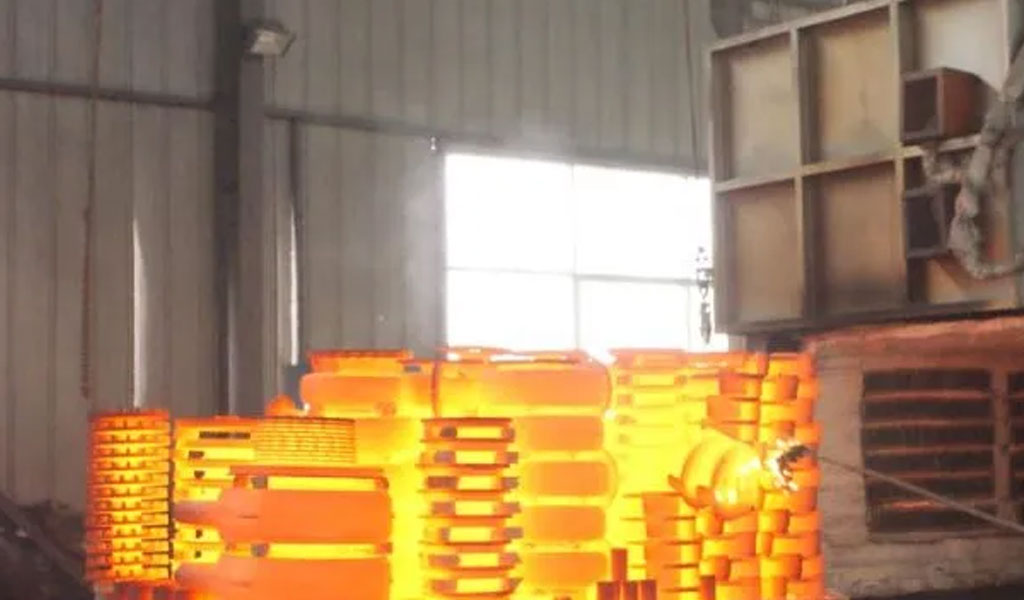
The aluminum and aluminum alloy materials are heated to a certain temperature and kept for a certain period of time to obtain the expected product structure and performance.
The Basic Principle Of Aluminum And Aluminum Alloys Heat Treatment
Annealing: The product is heated to a certain temperature and kept for a certain period of time and then cooled to room temperature at a certain cooling rate. Through atomic diffusion and migration, the organization is made more uniform and stable, and the internal stress is eliminated, which can greatly improve the plasticity of the material, but the strength will be reduced.
- Ingot homogenization annealing: keep the ingot at high temperature for a long time, and then cool at a certain speed (high, medium, low, slow) to homogenize the chemical composition, structure and performance of the ingot, which can improve the plasticity of the material by about 20% and reduce extrusion. The pressure is about 20%, the extrusion speed is increased by about 15%, and the surface treatment quality of the material is improved.
- Intermediate annealing: Also known as local annealing or inter-process annealing, it is to improve the plasticity of the material, eliminate the internal processing stress of the material, and keep the temperature at a lower temperature for a short time, in order to continue processing or obtain a combination of properties .
- Complete annealing: Also known as finished annealing, it is held at a higher temperature for a certain period of time to obtain a softened structure in a fully recrystallized state, with the best plasticity and lower strength.
Solution quenching treatment: heat the heat-treatable-strengthened aluminum alloy material to a higher temperature and keep it for a certain period of time, so that the second phase or other soluble components in the material are fully dissolved into the aluminum matrix to form a supersaturated solid solution, and then This supersaturated solid solution is kept to room temperature by means of rapid cooling. It is an unstable state. Because it is in a high energy state, solute atoms may be precipitated at any time. However, at this time, the material has high plasticity and can be cold worked or straightened.
- On-line quenching: For some alloy materials with low quenching sensitivity, solid solution can be carried out at high temperature during extrusion, and then quenched by air cooling (T5) or water mist cooling (T6) to obtain certain microstructure and properties.
- Offline quenching: For some alloy materials with high quenching sensitivity, they must be reheated to a higher temperature in a special heat treatment furnace and kept for a certain period of time, and then quenched into water or oil with a transfer time of no more than 15 seconds to obtain A certain structure and performance can be divided into salt bath quenching, air quenching, vertical quenching and horizontal quenching according to different equipment.
Aging: The material after solution quenching is kept at room temperature or higher temperature for a period of time, the unstable supersaturated solid solution will decompose, and the second phase particles will be precipitated (or precipitated) from the supersaturated solid solution, distributed in α (AL) Around the aluminum grains, resulting in strengthening is called precipitation (precipitation) strengthening.
- Natural aging: Some alloys (such as 2024, etc.) can produce precipitation strengthening at room temperature, which is called natural aging.
- Artificial aging: Some alloys (such as 7075, etc.) do not have obvious precipitation strengthening at room temperature, but the precipitation strengthening effect at higher temperatures is obvious, which is called artificial aging.
Artificial aging can be divided into under-aging and over-aging.
- Unaging: In order to obtain a certain performance, control a lower aging temperature and maintain a shorter aging time.
- Over-aging: In order to obtain some special properties and better comprehensive properties, aging is carried out at a higher temperature or under a longer heat preservation time.
- Multi-stage aging: In order to obtain some special properties and good comprehensive properties, the aging process is divided into several stages. It can be divided into two-stage and three-stage aging
Regression treatment: In order to improve plasticity, facilitate cold forming or correct shape and position tolerances, the products that have been quenched and aged can be restored to the new quenched state by heating at high temperature for a short period of time, which is called regression treatment.
Be-cu aluminum machining china prototype company service include : aluminum cnc turning, aluminum milling service, aluminum extrusions, 5 axis machining aluminum, swiss machining aluminum, aluminum guide,aluminum products